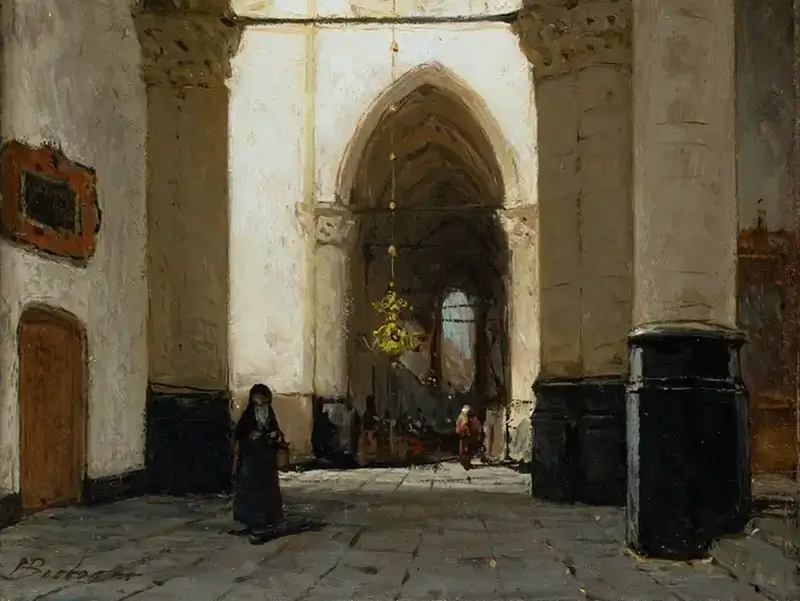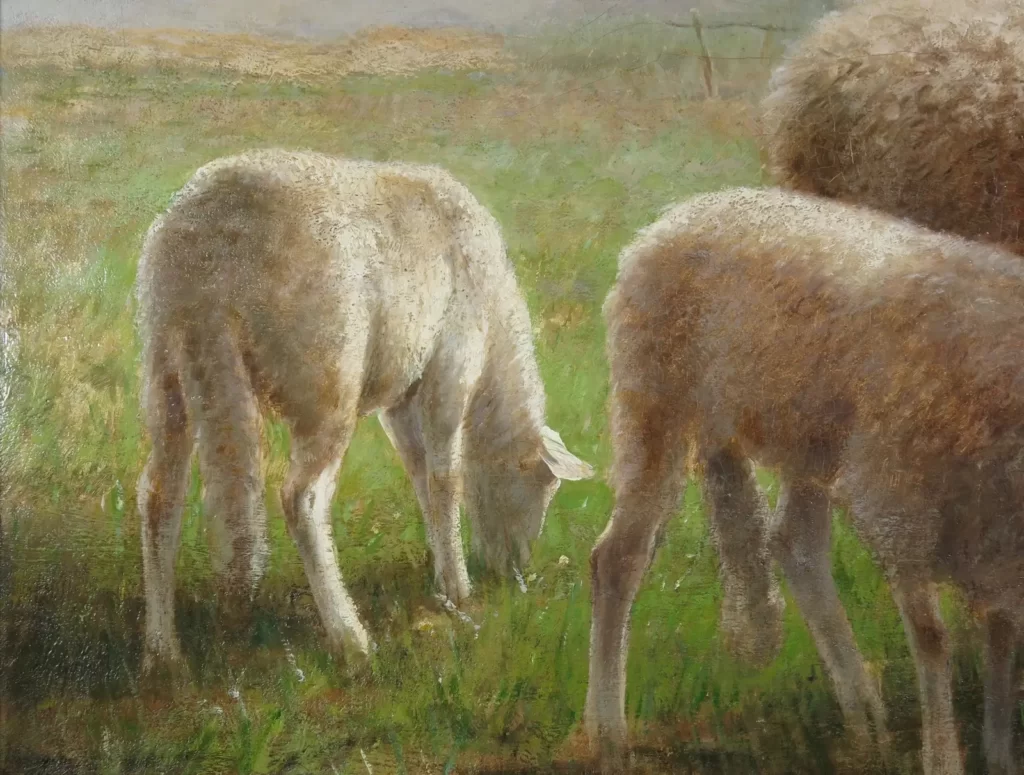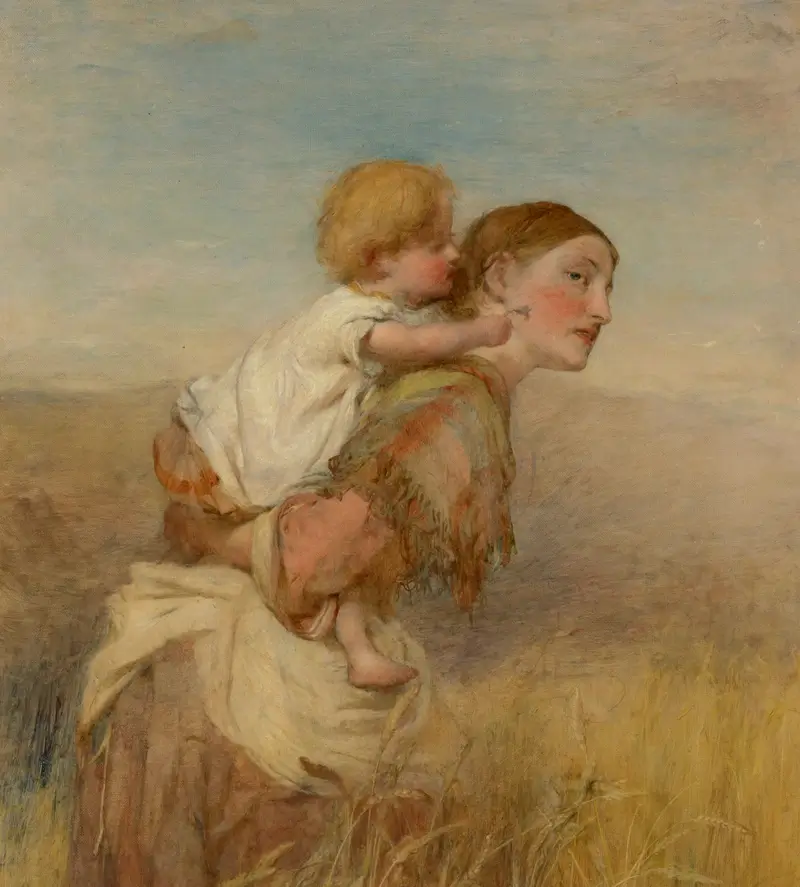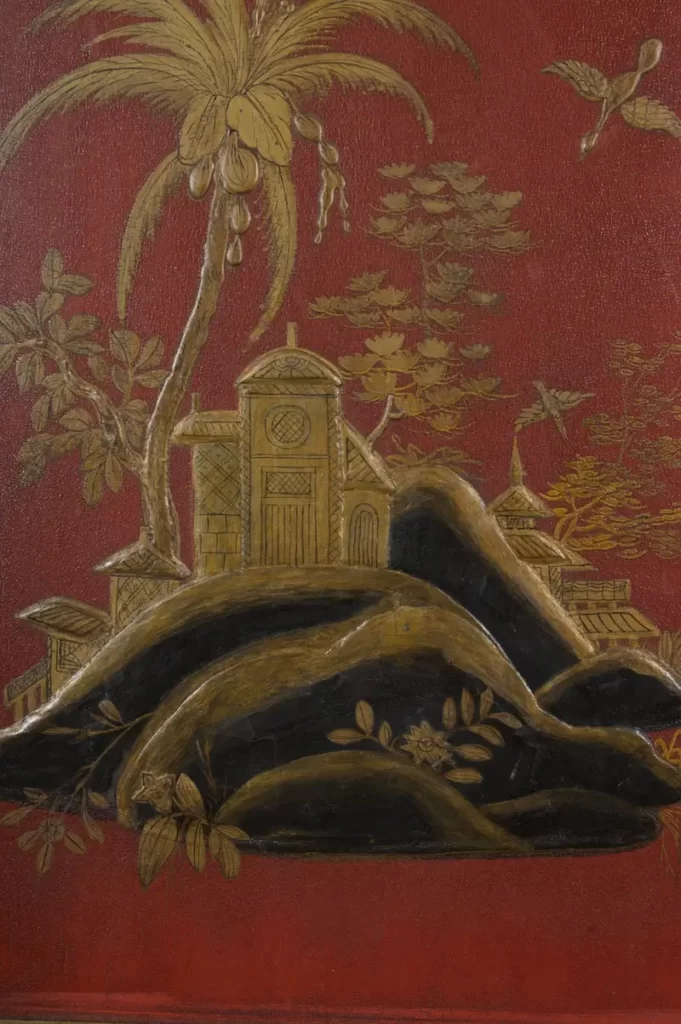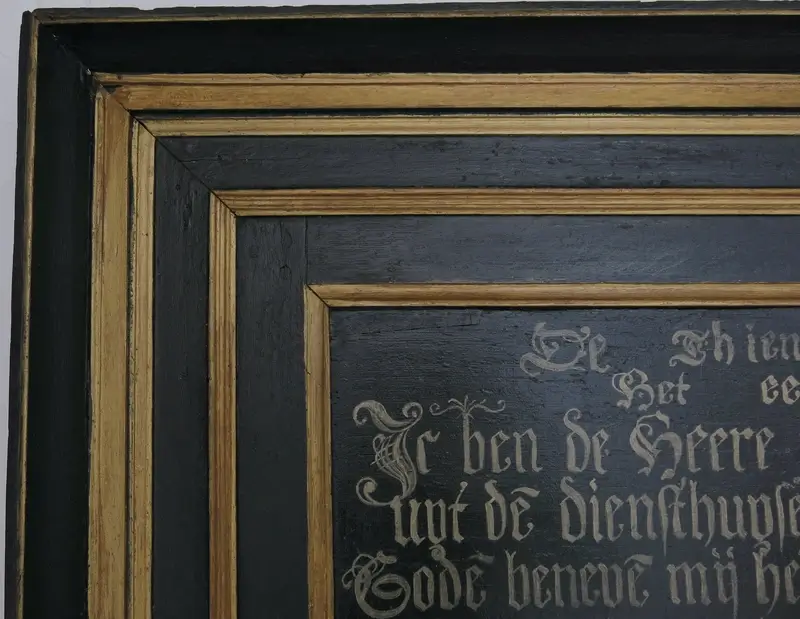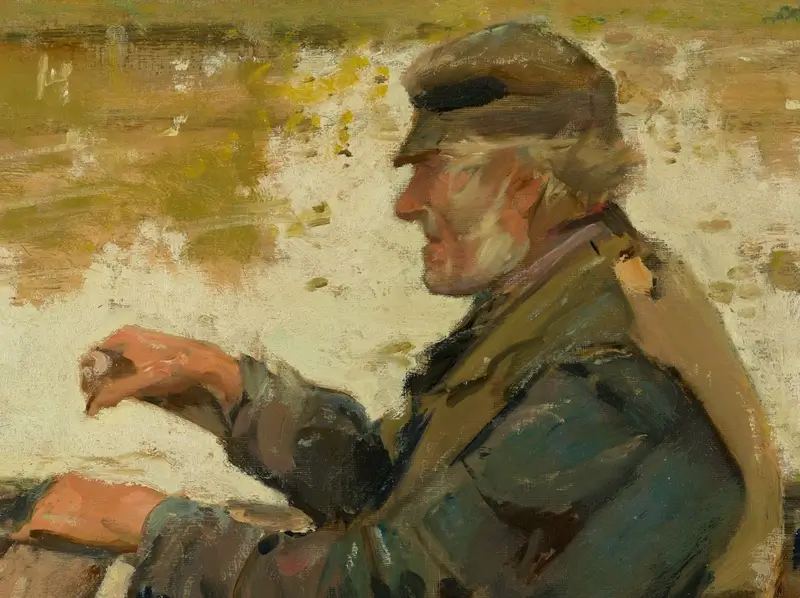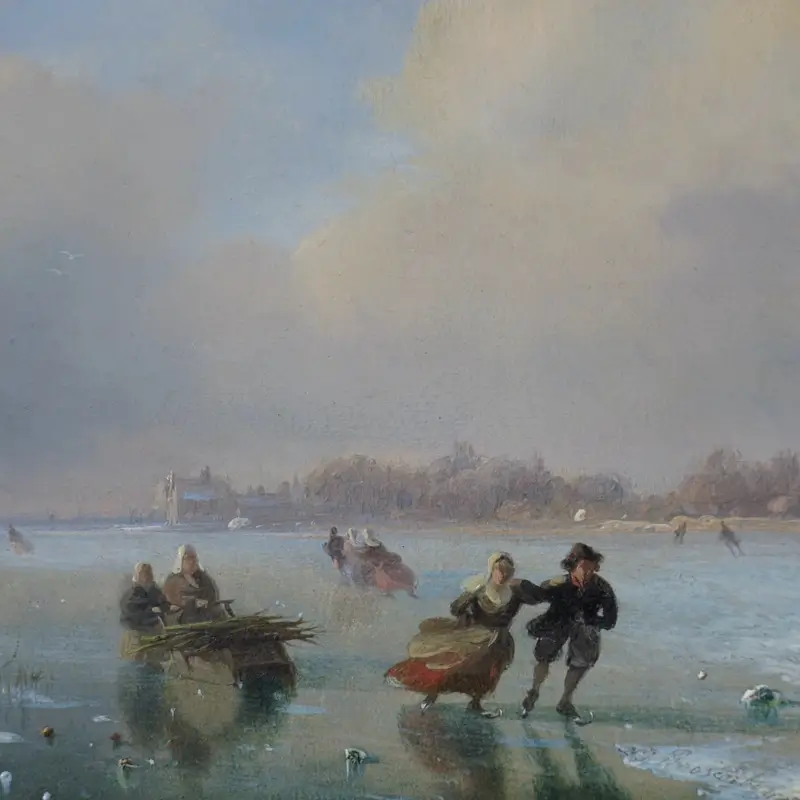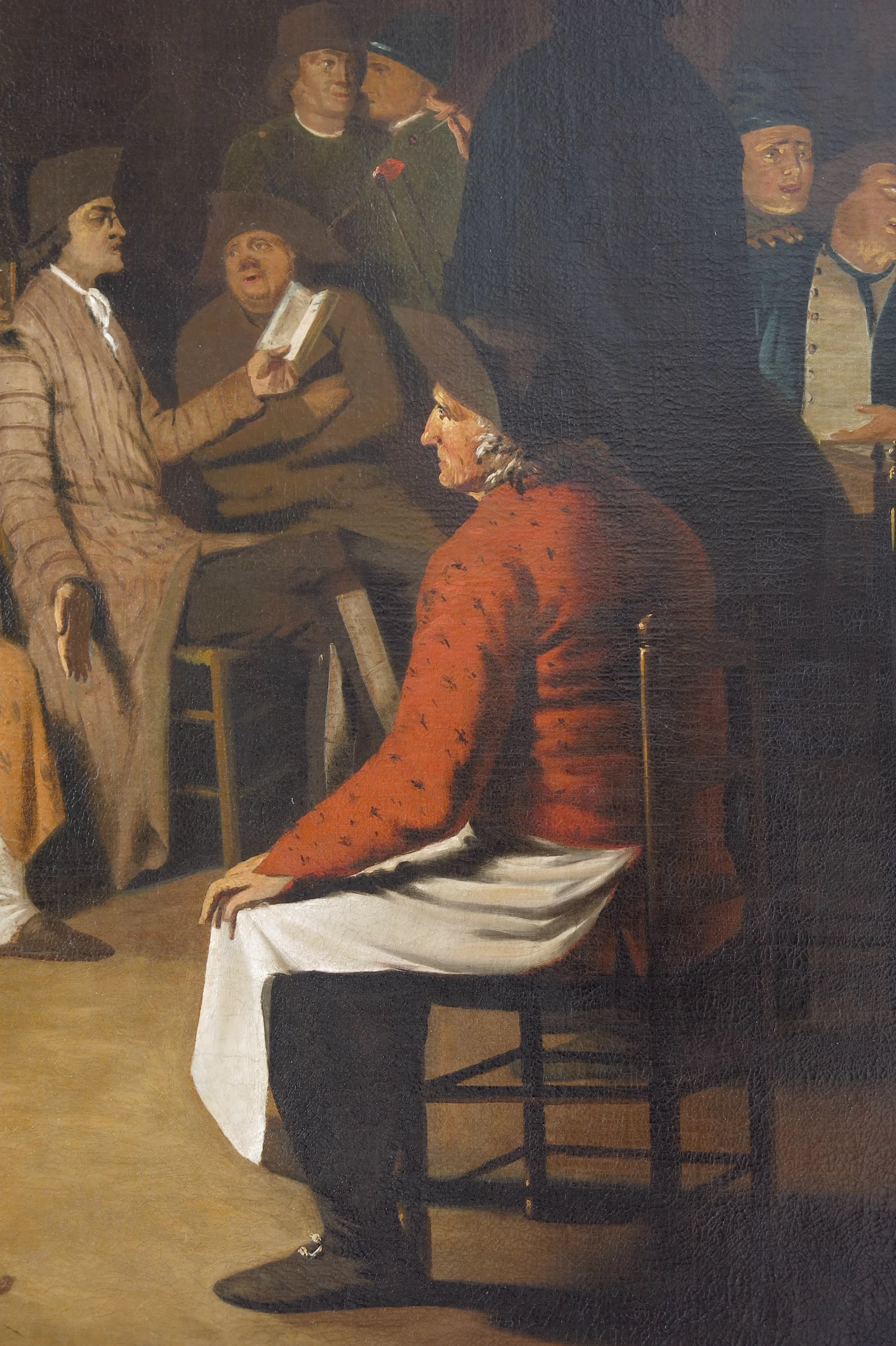
detail after treatment
Aldert van de Poort
Treemter St. Antony Gasthuis
Oil on canvas, 1805, 169.5 x 106.5 cm, signed lower left corner
Sint Anthony Gasthuis, Leeuwarden
This painting by the Friesian artist Aldert van de Poort (1777-1807) was commissioned by the Saint Anthony Gasthuis (a senior living community). The ‘Sint Anthoon’ is located in a unique set of historic buildings in the centre of Leeuwarden. Originally, it provided charitable care as well as a place of residence for poor, elderly, and those in distress.
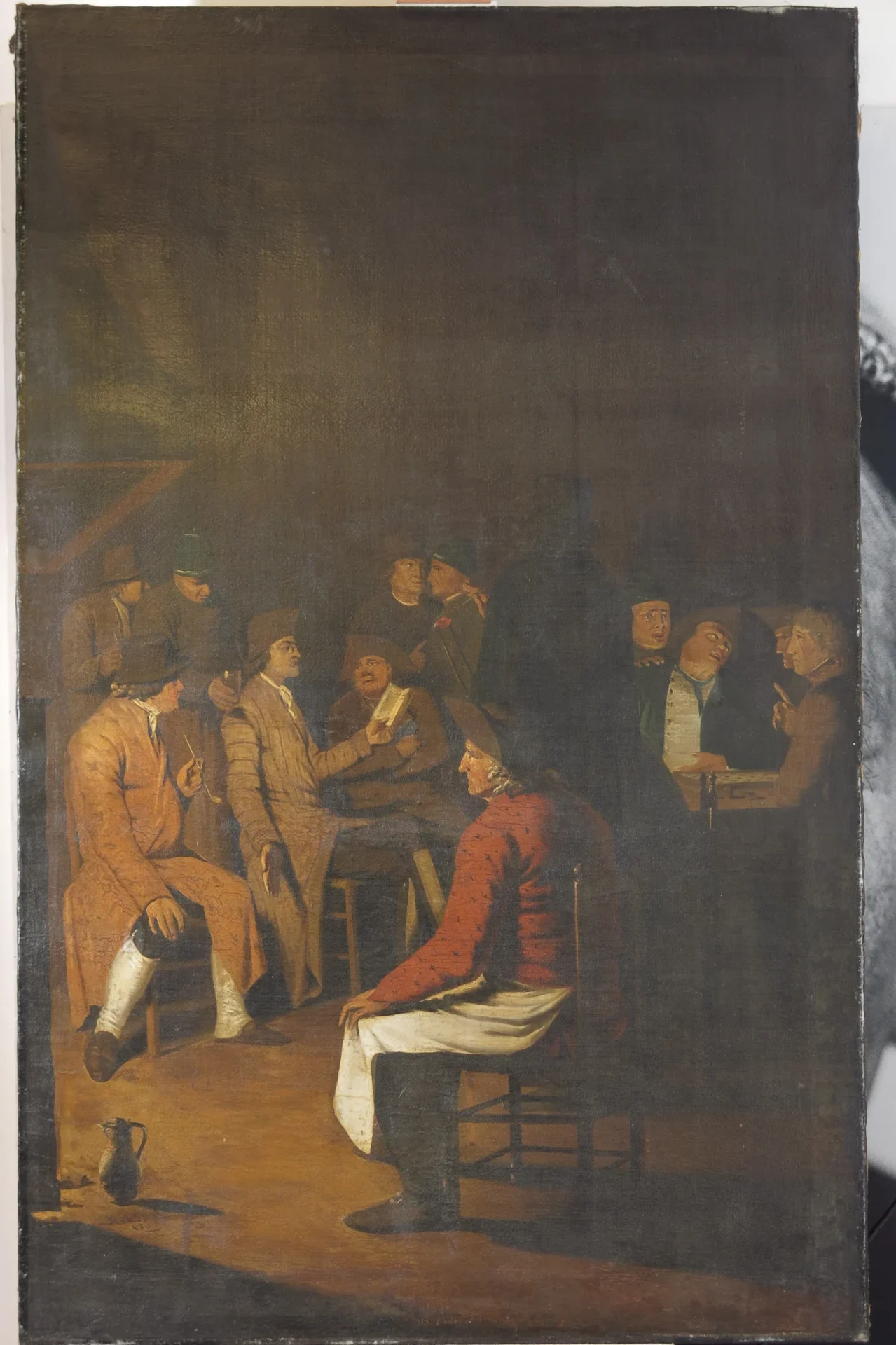
before treatment
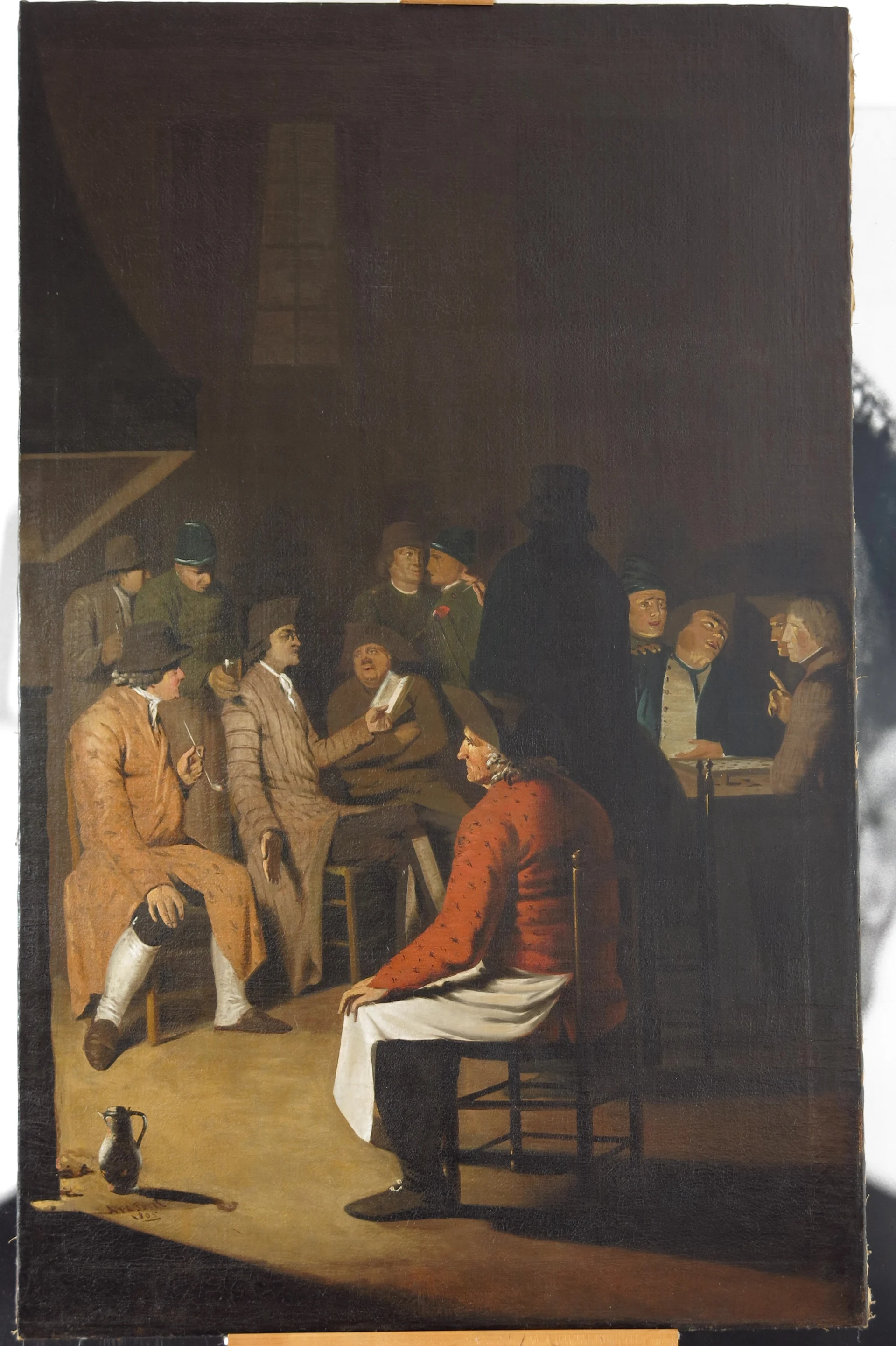
after treatment
The painting’s original setting was above the hearth in the new meeting room of the ‘voogden and voogdessen’ (governors) of the Gasthuis.
A company of men is portrayed. Several figures are gathered around a person just left of the centre – the reader – while others appear absorbed in a board game nearby. The fire from the hearth on the left side of the painting is the only source of illumination.
The painting depicts a scene in the ‘Treemter’, the space where occupants still gather and socialise today. The choice to portray the (male) occupants, rather than the governors, is a striking one. It indicates the current, more democratic tendencies and forms a breach with the tradition of portraying the governors.
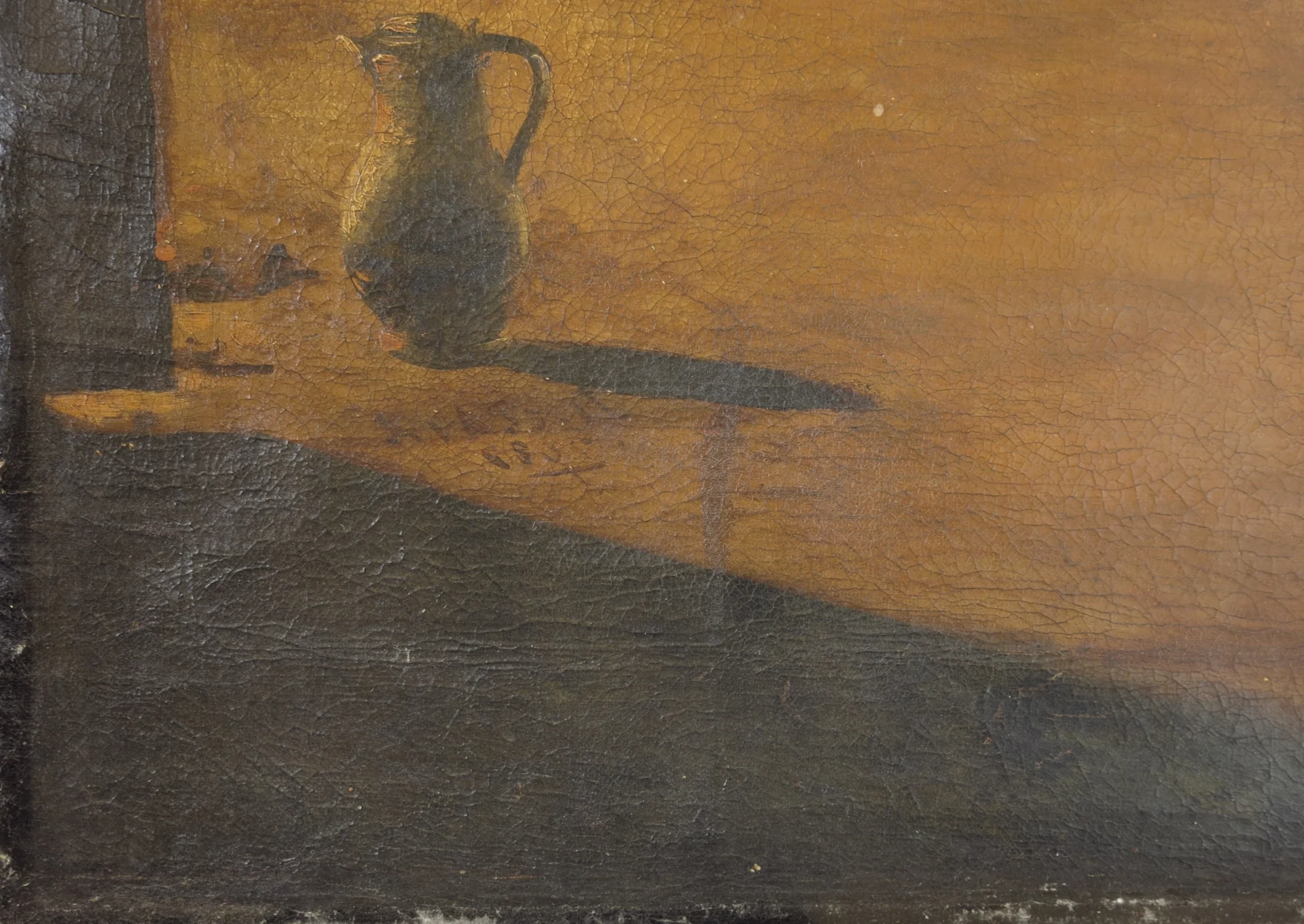
detail before treatment
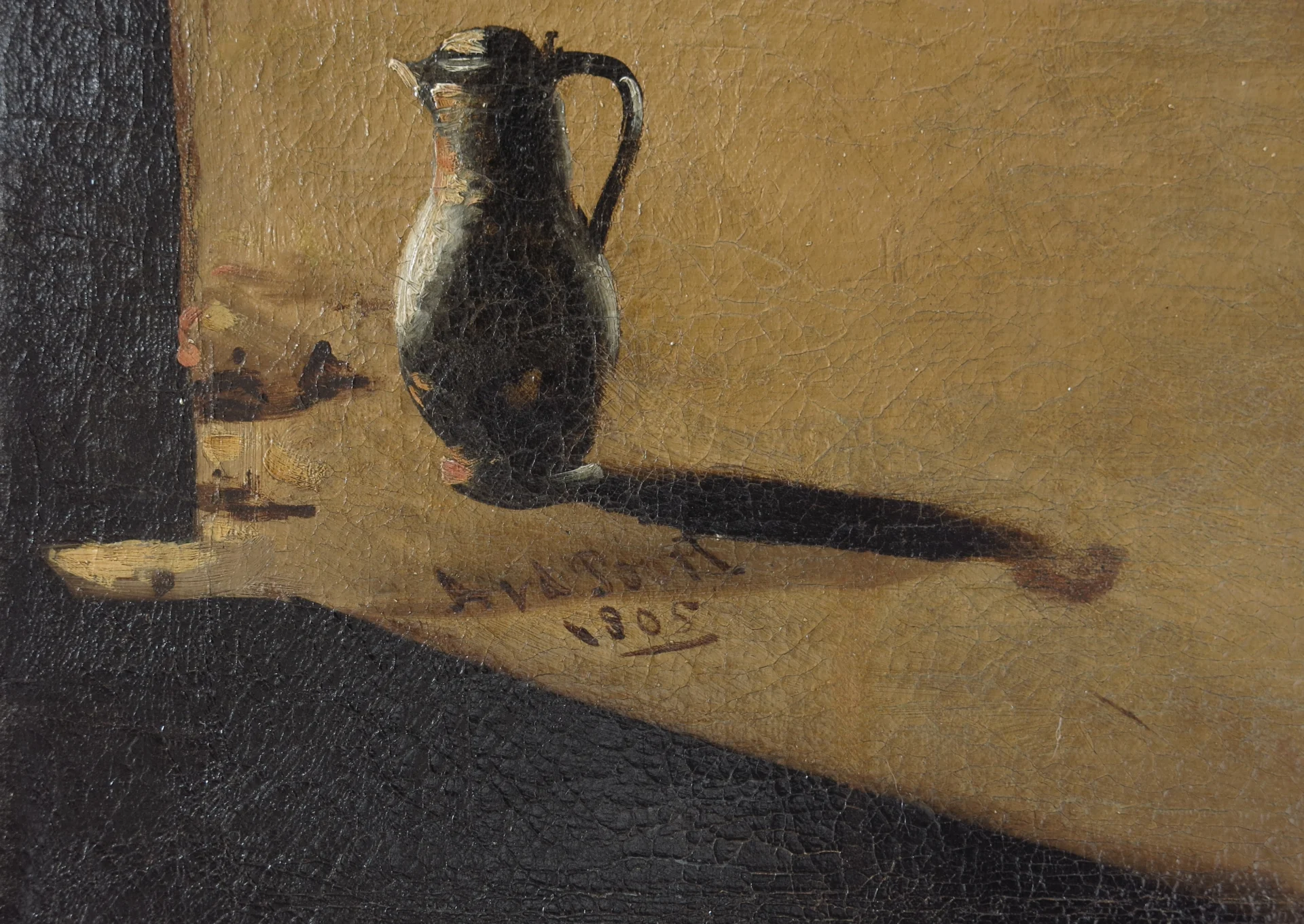
detail after treatment
The build-up of dirt and discoloured varnish had significantly obscured the scene making it difficult to read. The cracks in the painting were sharply raised and the paint showed cupping over most of the surface. The old lining had detached in areas, and the uneven and poor structural tension had led to significant distortions in the painting.
The conservation was undertaken in preparation for an upcoming exhibition at the Historical Centre Leeuwarden, held in celebration of the 600th anniversary of the Sint Anthony Gasthuis.
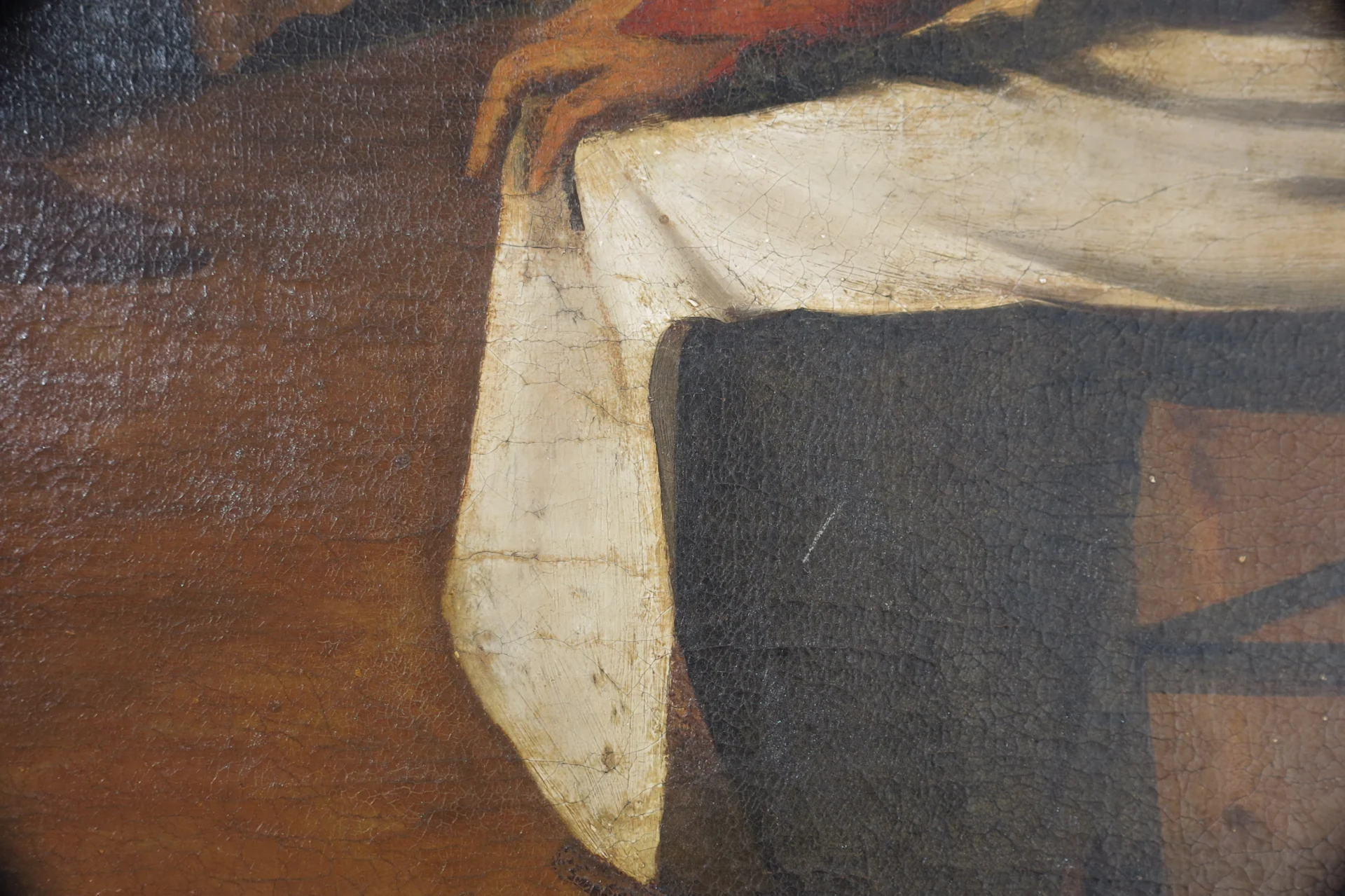
detail before treatment
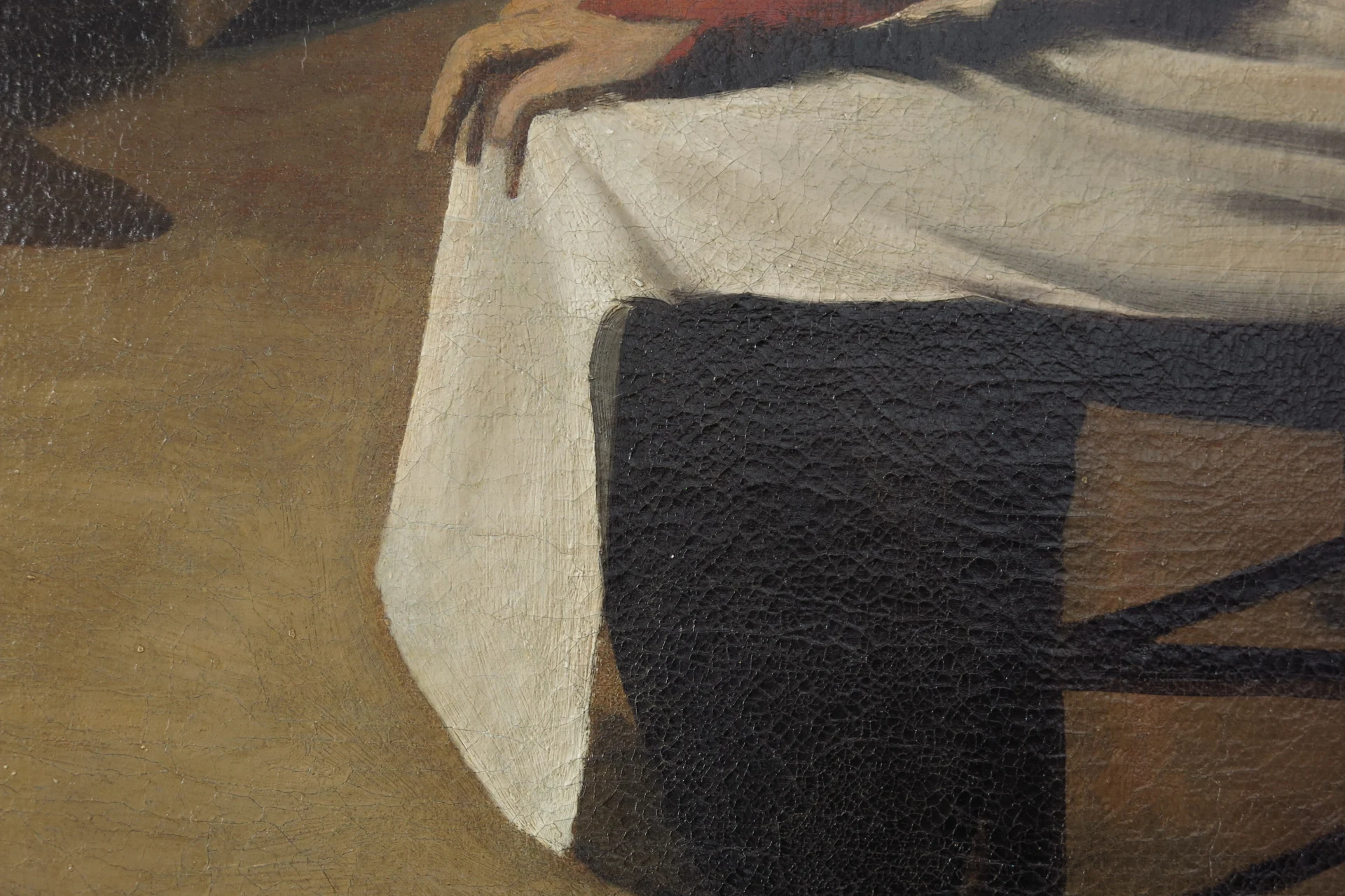
detail after treatment
The treatment included removal of the dirt, discoloured varnish layers and older restorations. To reduce penetration of solvent into the painting’s structure, and promote absorbance of varnish and overpaint out of the cracks and off the surface, the cleaning was done with gel (thickened solvent) and absorbent tissues. This technique also achieved a more even clean across the surface of the painting.
After one section had been cleaned in this way, the next step was carried out soon after. This order of work meant that a lower temperature on the hot spatula was sufficient to reduce the cupping of the paint and improve adhesion of the raised cracks.
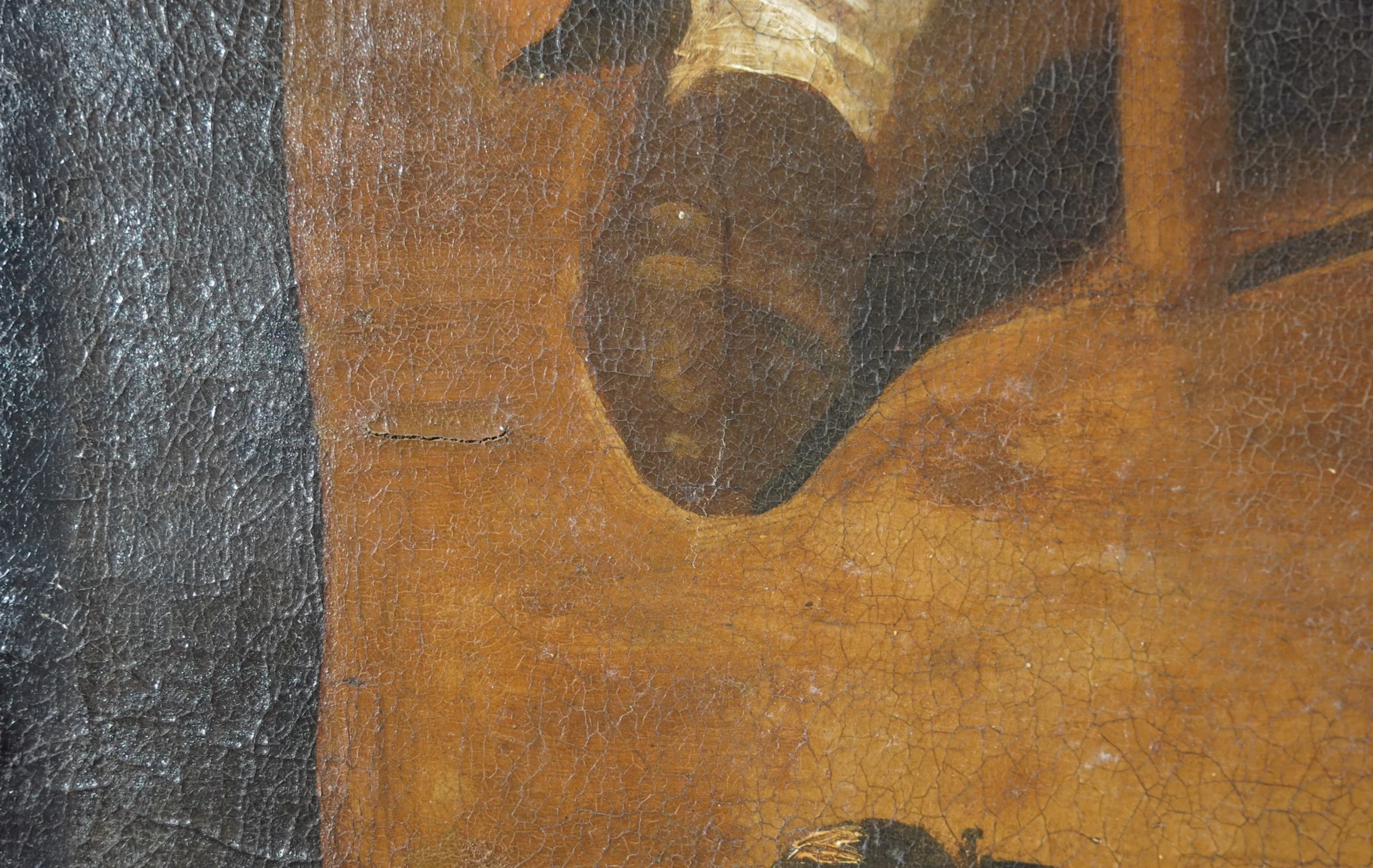
detail before treatment
When these steps and the structural stabilisation of the previous lining had been completed, losses in the paint layers were filled. Then an intermediate varnish layer was applied by brush before beginning with retouching of the fills and abraded areas. Afterwards, to improve the saturation of the paint passages, and integrate the gloss of the original paint with inpainted areas, a final varnish layer applied.
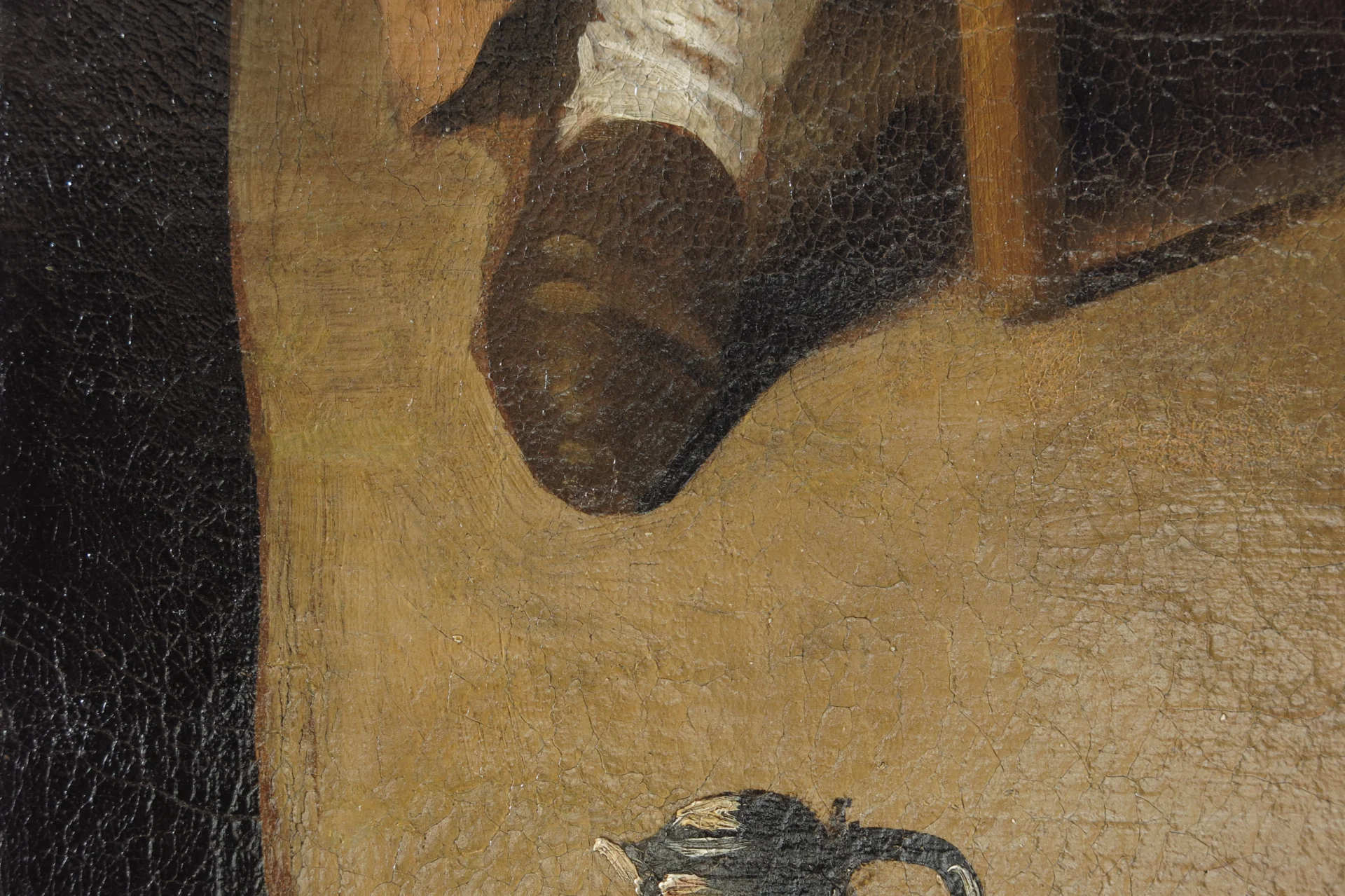
detail after treatment
Decisions both for the treatment steps and newly applied materials, were made with durability and reversibility, or ‘re-treatability’, of the painting in mind. Preventive conservation measures were taken to support the object’s long-term stability.
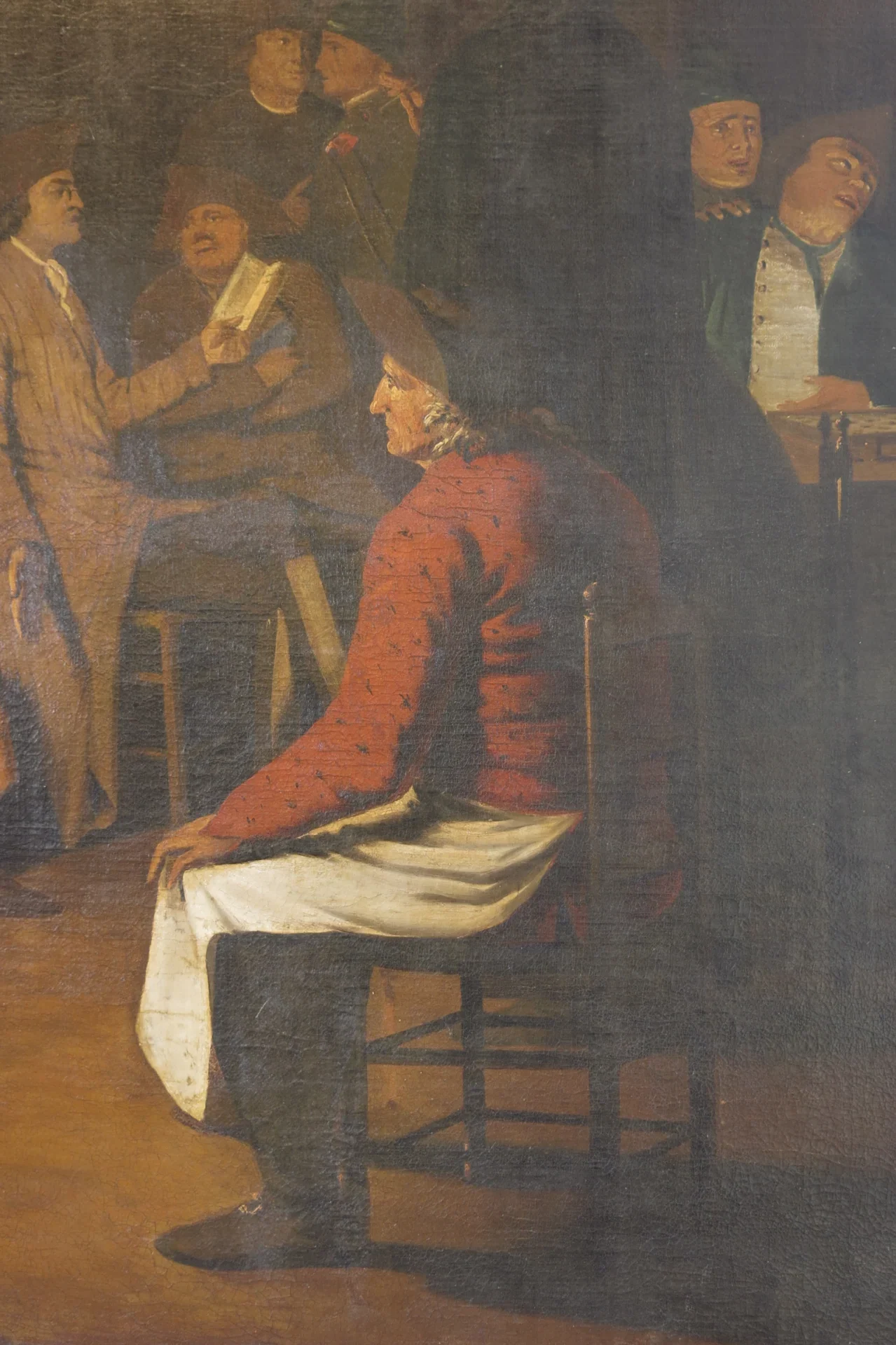
detail before treatment
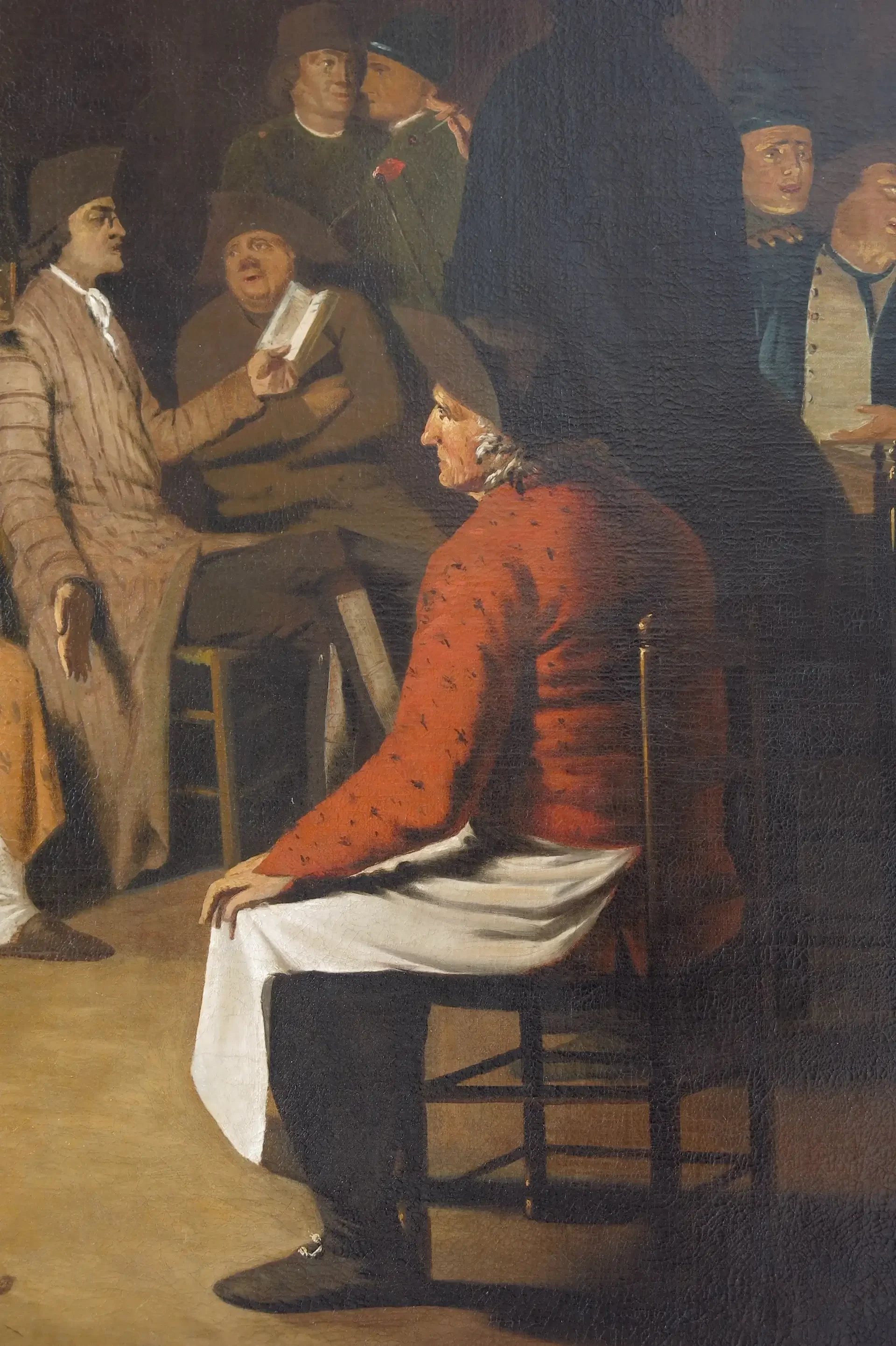
detail after treatment
The conservation treatment was both challenging and rewarding. The project was incredibly enriched by the collaboration and getting to know better the context in which the painting was made.

